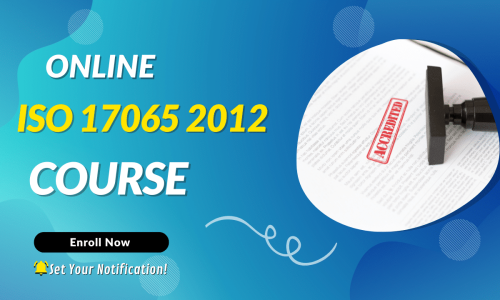Maintaining ISO/IEC 17065 Accreditation: Surveillance Visits
Maintaining ISO/IEC 17065 Accreditation: Surveillance Visits
Understanding Surveillance Visits — Purpose, Frequency and Expectations
Surveillance visits exist because accreditation isn’t a one-time event. The accreditation body needs to confirm that your system continues to meet ISO/IEC 17065 requirements and that you’re applying your scheme consistently. These visits typically occur annually, though some accreditation bodies adjust frequency based on risk, scope complexity, or past findings.
Many teams assume surveillance is lighter than the initial accreditation. It isn’t. The focus shifts from setup to real-world performance. Assessors want to see operational discipline, evidence of competence, documentation maturity, and consistent application of your scheme rules.
A useful approach is to treat surveillance as ongoing improvement, not a yearly checkpoint. Document changes as they happen. Track updates. Monitor processes. When you maintain readiness throughout the year, surveillance becomes predictable.
What Accreditation Bodies Review During Surveillance — Documentation, Controls and Evidence
During surveillance, assessors review the parts of your system that demonstrate real operational performance. They examine impartiality committee records, evaluation files, competence evidence, subcontractor controls, complaints and appeals logs, and certification decision records. They also check whether you updated your documentation in response to changes in regulations, standards, or scheme requirements.
One of the most common findings during surveillance is outdated or misaligned documents. This happens when teams wait too long to update procedures or forget to integrate regulatory changes into their scheme. Another frequent issue is inconsistent evaluation evidence across product categories.
The certification bodies that perform best maintain a rolling update log. This simple tool shows assessors what changed, why it changed, and who approved it. It speeds up their review and reduces questions.
Leaving documentation updates until the last minute creates confusion, errors, and unnecessary findings.
 Surveillance Witness Assessments — When They Happen and How to Prepare
Surveillance Witness Assessments — When They Happen and How to Prepare
Witness assessments are sometimes part of surveillance, depending on your scope and operational changes. If you’ve added new product categories, changed evaluation methods, hired new evaluators, or introduced new subcontractors, the accreditation body may require witnessing to verify your competence and consistency.
Witness assessments depend on product readiness and evaluator availability. If either one isn’t aligned, the visit gets delayed. I’ve seen teams scramble because they assumed witnessing was optional. It isn’t. It’s triggered by risk and changes in your system.
Plan witness events early. Align them with routine evaluation activities. When your team performs the evaluation confidently and consistently, the assessor sees the real process, not a staged one. Poor preparation in this area often leads to repeat witnessing, which increases cost and extends the timeline.
Corrective Actions and Continuous Improvement — Closing Findings After Surveillance
Even strong systems receive findings during surveillance. What matters is how you handle them. Assessors look for root-cause analysis, clear corrective actions, and evidence that the correction actually fixes the underlying issue.
Typical findings include incomplete evaluation records, outdated procedures, weak impartiality evidence, or inconsistent competence documentation. These are avoidable if you monitor performance throughout the year.
When findings occur, respond within thirty days. Submit clear evidence, structured explanations, and effective root-cause analysis. Don’t treat symptoms. If you only correct the surface issue, the problem will return during the next surveillance.
One certification body I supported dramatically reduced findings by introducing monthly internal mini-audits. These regular checks helped them identify issues early and avoid surprises.
Internal Monitoring Between Surveillance Visits — Staying Audit-Ready Year-Round
The organizations that maintain accreditation most effectively are the ones that view compliance as a continuous process. They don’t panic before surveillance visits because they maintain readiness month by month.
Practical actions include impartiality committee meetings, evaluator calibration sessions, subcontractor performance reviews, documentation updates, and scheme evaluations. Spread these activities across the year instead of compressing everything into the month before surveillance.
Consider creating a surveillance-readiness dashboard. Track competence updates, complaints, appeals, evaluation reviews, and document revisions. When an assessor asks for evidence, you have everything ready.
Reactive maintenance creates chaos. Planned maintenance creates confidence.
Managing Changes — How Updates Influence Surveillance Requirements
Changes in your certification body must be communicated to the accreditation body promptly. If you expand your scope, open new locations, introduce new evaluators, change evaluation methods, or partner with new subcontractors, the accreditation body must be informed.
Many teams wait until surveillance to reveal major changes. That’s a serious mistake. Accreditation bodies expect to be notified early because these changes affect risk, competence, and consistency.
Informing the accreditation body proactively strengthens your credibility and avoids unexpected findings.
Frequently Asked Questions
How often do surveillance visits occur?
Most accreditation bodies conduct surveillance annually, but some apply risk-based scheduling. Changes in scope, new evaluators, or performance issues may trigger more frequent monitoring.
Can surveillance include witness assessments?
Yes. Witnessing is required when significant changes occur or when risk indicators show the need for verification. It’s not always scheduled annually, but it’s triggered by system changes.
What causes the most findings during surveillance?
Documentation gaps, inconsistent evaluation evidence, outdated procedures, weak impartiality controls, and incomplete competence records. All of these are avoidable with disciplined internal monitoring.
Conclusion — Sustaining Compliance Through Consistency and Preparation
Maintaining ISO/IEC 17065 accreditation is not about one big annual push. It’s a continuous cycle of monitoring, updating, evaluating, and improving. When you maintain discipline year-round, surveillance visits become predictable, manageable, and far less stressful.
I’ve guided many certification bodies through surveillance cycles, and the pattern is clear: the teams that stay organized and proactive avoid findings, reduce repeat witnessing, and preserve their credibility effortlessly. The teams that wait until surveillance month suffer unnecessary pressure and delays.
If you want help building a structured surveillance-readiness plan or need support preparing for your next visit, I can guide you through the steps and help you stay compliant all year long.
Melissa Lavaro is a seasoned ISO consultant and an enthusiastic advocate for quality management standards. With a rich experience in conducting audits and providing consultancy services, Melissa specializes in helping organizations implement and adapt to ISO standards. Her passion for quality management is evident in her hands-on approach and deep understanding of the regulatory frameworks. Melissa’s expertise and energetic commitment make her a sought-after consultant, dedicated to elevating organizational compliance and performance through practical, insightful guidance.















